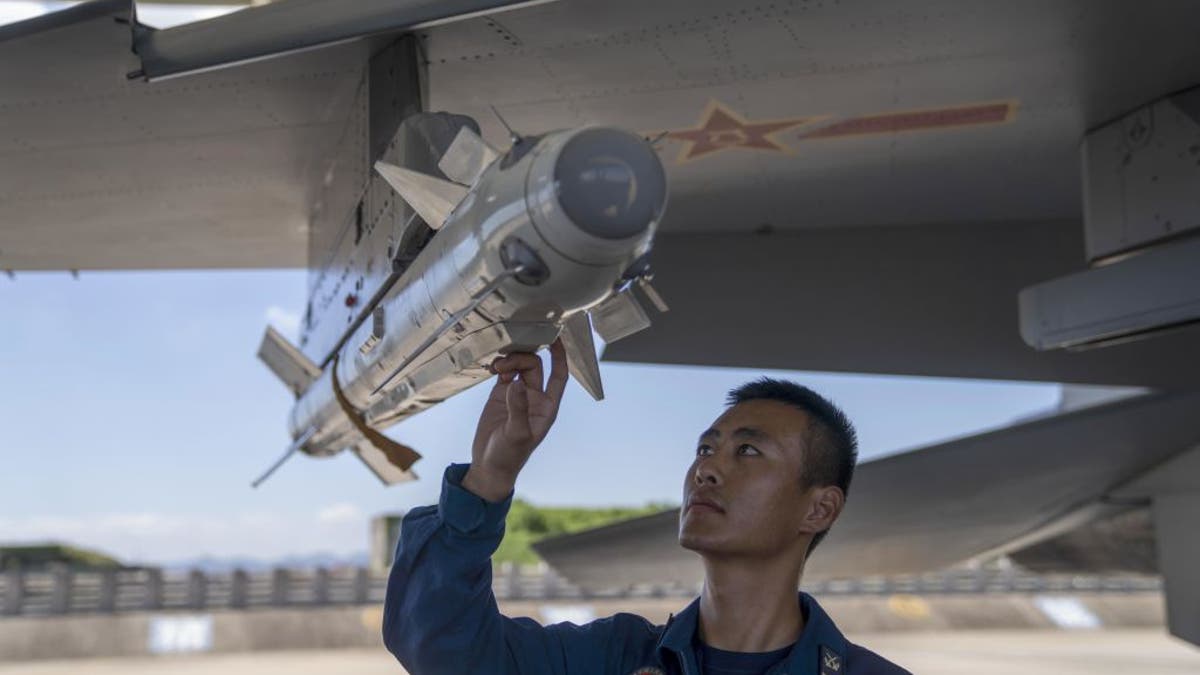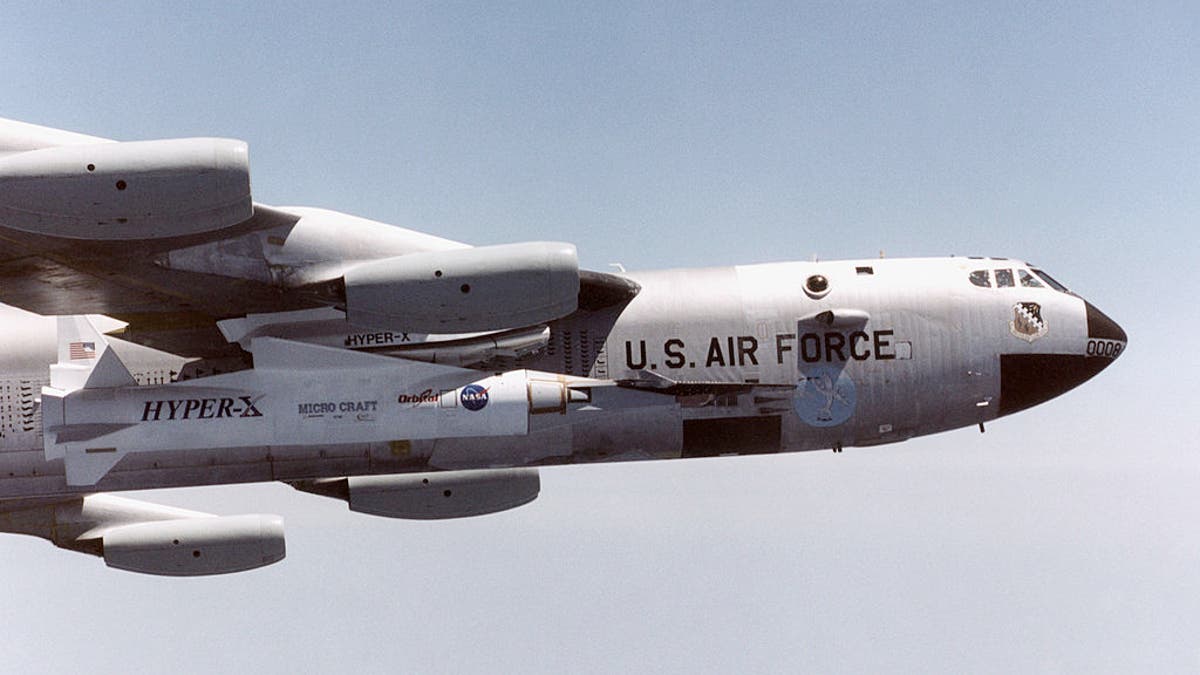US falling behind China on hypersonic weapons development
Fox News national security correspondent Jennifer Griffin has the latest on hypersonic weapons development on 'Special Report.'
It's been almost one year since China surprised the Pentagon and the world by carrying out a hypersonic glide vehicle test that traveled around the world and landed just two dozen miles from its target.
"The significance was it scared the hell out of everybody," Sen. Angus King told Fox News. "If the thing is dwelling over Kansas City, you're talking you're reducing 15 to 20 minutes to two to three minutes. That's a qualitative change."
Some officials in the Pentagon described it as a "Sputnik" moment because the Chinese leapfrogged the U.S. with a technology that could evade billions of dollars of missile defense, setting off an arms race.
Hypersonic weapons fly at speeds of at least Mach 5, are highly maneuverable, are able to change course during flight and can fly 100 feet above the ocean undetected.
PUTIN USES MINORITIES AS ‘CANNON FODDER,' BURYAT SOLDIERS RETURN HOME FROM UKRAINE

A soldier checks the missiles on an air fighter at a PLA military airport during a training session in east China's Zhejiang province in late August 2021. (Feature China/Future Publishing via Getty Images)
In an exclusive interview with Fox News, Sen. King, I-Maine, who chairs the Senate Armed Services Subcommittee on Strategic Forces, said the U.S. still lags behind its adversaries.
The senator from Maine blames U.S. fear of failure, which is different from adversaries like China.
"We're probably, I think, five years behind in terms of where the Chinese are," King said. "They don't mind failing in tests. We have this idea that we've got to get it exactly right and every test has to be a success. They have a series of failures, each one of which they learned something."
King has asked the Pentagon in nearly every public hearing why it isn't investing more in hypersonic technology.
"Frankly, the Chinese and the Russians just plain got ahead of us," King said. "If our strategy in the Pacific is based upon aircraft carriers, and an aircraft carrier is vulnerable to a 6,000-mile-an-hour missile, we're in trouble."
GOP LAWMAKERS LAUNCH PROBE OF TIKTOK'S SHARING OF USER DATA WITH CHINESE PARENT COMPANY
The U.S. announced a failed weapons test in June. A full hypersonic system for a Common Hypersonic Glide Body atop a two-stage missile booster had failed to detach and reach Mach 5 speeds at a testing site at the Pacific Missile Range Facility in Hawaii, the Pentagon announced.
But, on Tuesday, just days after the failed test announcement, the Pentagon made it a point to announce two recent successful hypersonic tests. One of them, conducted by the Defense Advanced Research Projects Agency (DARPA) in May, demonstrated the first flight test of the ground-based hypersonic boost-glide system to be launched from a standard military truck at White Sands Missile Facility in New Mexico.
More recently, the Air Force successfully tested a hypersonic missile off the coast of Southern California that could be released from under the wing of a B-52 strategic jet bomber.

The experimental X-43A failed the first of three planned tests June 2, 2001, after its booster rocket veered out of control, forcing space scientists to destroy the unmanned aircraft above the Pacific Ocean. (NASA via Getty Images)
Russian scientists mocked the failed U.S. hypersonic glide vehicle test last week, saying the U.S. design model for hypersonic weapons is "too complex." Congress is seeking $292 million dollars in the new defense bill to fund more research and development for hypersonics.
EUROPEAN NATIONS COORDINATE ON PROSECUTING RUSSIAN WAR CRIMES IN UKRAINE
Sen. King compares hypersonic weapons to the introduction of the longbow, which helped the British beat the French when they were outmanned at the Battle of Agincourt in 1415, and the stirrup, which allowed Ghenghis Khan's soldiers to steady their shot from atop a horse.
"Technological developments often determine the outcome of conflict," King said. "And hypersonic, to me, are the game-changing strategic difference in any future conflict that this country is engaged in. And we're behind."
At a confirmation hearing earlier this year, John Plumb, first assistant secretary of defense for space policy, agreed.
"It certainly appears that we are behind," Plumb said in response to Sen. King in January.
Outgoing Joint Chiefs Vice Chairman General John Hyten was the first to raise the alarm about the U.S. losing the hypersonic race in November.

President Biden plans to request $715 billion for his first Pentagon budget, signaling efforts to deter China and Russia by advancing hypersonic weapons and bolstering the U.S. Navy fleet with ballistic missile submarines and unmanned ships. (Stefani Reynolds/Bloomberg via Getty Images)
The U.S. military, realizing the threat these weapons pose, has had to resort to using hot air balloons to provide an early warning system to protect the nation from hypersonic weapons that can now evade U.S. missile defense systems. Congress is requesting $27.1 million for this balloon defense in next year's defense budget
Pentagon officials have publicly pushed back on the narrative that the U.S. has "fallen behind," pointing out that U.S. ballistic missiles and most of its vast nuclear arsenal are already hypersonic, meaning, by definition, they fly five times faster than the speed of sound. Defense Secretary Lloyd Austin was asked at a press conference in November whether the Chinese hypersonic test was a "Sputnik" moment.
CLICK HERE TO GET THE FOX NEWS APP
"Well, those are terms that I wouldn't use," Austin said
When asked why the Chinese have been able to field a medium-range hypersonic weapon and the U.S. had not, Austin bristled.
"I don't know if they fielded those weapons, but they're testing those weapons," Austin said.
























